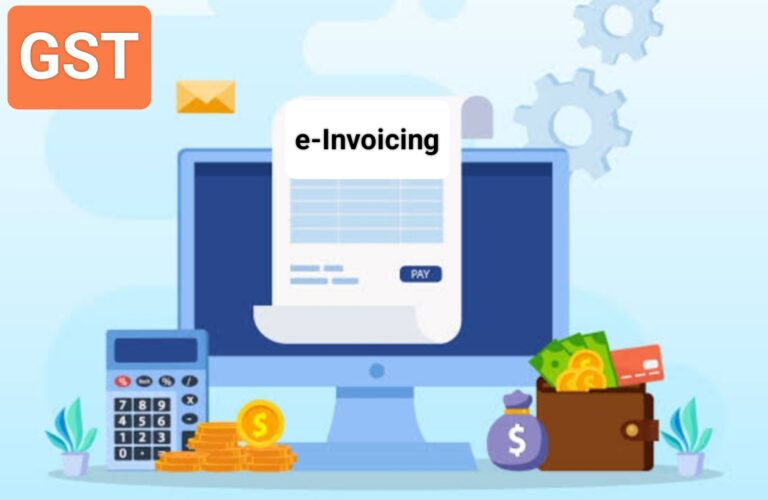Introduction to e-Invoicing
E-Invoicing under GST refers to the electronic reporting of specific GST-related documents to designated Invoice Registration Portals (IRPs) to obtain an Invoice Reference Number (IRN). Contrary to common misconception, e-invoicing does not involve the generation of invoices by government portals. Instead, taxpayers continue using their existing Accounting, Billing, or ERP systems to create invoices. These invoices are then reported to any of the six authorized IRPs in a standardized format, called Form GST INV-1 or Schema. Notably, generating IRNs through these portals is entirely free of charge.
Eligibility for e-Invoicing
Who is Required to Comply?
Taxpayers whose aggregate turnover exceeds the notified threshold in any financial year since 2017-18 (based on PAN) are required to adopt e-invoicing. As of August 1, 2023, the threshold is set at ₹5 crore and above.
Exemptions
Certain entities and taxpayers are exempt from e-invoicing as specified in government notifications. It is advisable to refer to the respective notifications for detailed exemption criteria.
Also Read: Kerala High Court Rules Financial Grants for Daily Operations Exempt from GST
Documents Covered Under e-Invoicing
E-invoicing applies to:
- GST invoices
- Credit notes
- Debit notes
These documents pertain to:
- B2B Supplies
- Supplies to SEZs (with or without payment of GST)
- Exports (with or without payment of GST)
- Deemed Exports
How e-Invoicing Works
- Invoice Generation: Taxpayers create GST-compliant invoices using their Accounting/Billing/ERP systems.
- Invoice Reporting: These invoices are uploaded to any of the six authorized IRPs.
- Validation & Return: The IRP validates the invoice, generates a unique IRN, and returns a digitally signed e-invoice along with a QR code.
- Issuance: The taxpayer issues the validated invoice (with QR code) to the buyer. A GST invoice for B2B transactions is considered valid only if it carries a valid IRN.
Also Read: How to Challenge SCNs Under Section 74 of the CGST Act, 2017
Step-by-Step Process for e-Invoicing
Step 1: Enablement for e-Invoicing
- Taxpayers meeting the eligibility criteria are automatically enabled for e-invoicing on any of the six authorized IRPs.
- Enablement status can be checked at e-Invoice Portal.
- If not enabled, taxpayers can self-enable on the portal.
- Note: Enablement does not equate to a mandatory obligation but ensures only eligible taxpayers can test/report invoices on IRPs.
Step 2: Register on an IRP
Taxpayers must register on one of the six notified IRPs to start reporting e-invoices. The process includes:
- One-time verification of registered mobile number and email via OTP.
- Upon successful validation, login credentials for the portal are issued.
The six authorized IRPs are:
- https://einvoice1.gst.gov.in
- https://einvoice2.gst.gov.in
- https://einvoice3.gst.gov.in
- https://einvoice4.gst.gov.in
- https://einvoice5.gst.gov.in
- https://einvoice6.gst.gov.in
Step 3: Reporting e-Invoices
- Taxpayers upload invoice data to the IRP in JSON format, adhering to the predefined INV-01 schema.
- IRPs support multiple reporting modes, including offline tools, online web tools, mobile apps, and APIs.
- The IRP validates the data, prevents duplicates, and issues a signed e-invoice with a unique IRN and QR code.
Step 4: Auto-Population of Returns
- A copy of the e-invoice is auto-shared with the GST system to populate the supplier’s GSTR-1 return.
- The taxpayer then issues the e-invoice, complete with IRN and QR code, to the buyer.
Verifying e-Invoices
Taxpayers can verify the authenticity of an e-invoice through:
- GSTN QR Code Verifier App: Available on Google Play Store and Apple App Store, this app allows users to scan the QR code to validate invoices.
- Search IRN Functionality: Visit Search IRN to search for invoice details using the IRN.
e-Invoice Master Information Portal
The e-Invoice Master Portal (https://einvoice.gst.gov.in) provides a centralized resource for all e-invoicing-related information. Key features include:
- Access to master codes and schema details
- Enablement status checks
- Links to all IRPs
- Search IRN functionality
Future updates may also allow taxpayers to download e-invoices directly from this portal.
Also Read: GST Council 55th Meeting Scheduled at Jaisalmer on 21 December: Key Updates and Expectations
By following these steps and leveraging the e-invoice system, businesses can ensure compliance with GST regulations while streamlining their invoicing processes. Always stay updated with the latest government notifications for changes or enhancements to the e-invoicing framework.
READ MORE
PAN 2.0 Project Approved by CCEA: A Milestone in Taxpayer Services Modernisation
Whether Capital Expenditure is an Application of Income under Section 11 of the Income Tax Act
